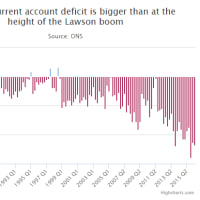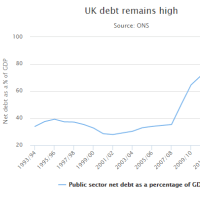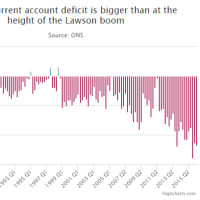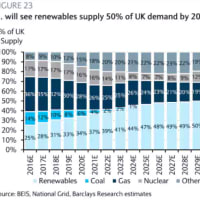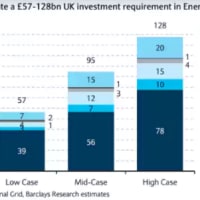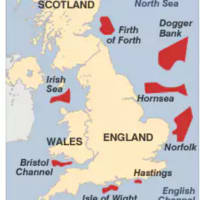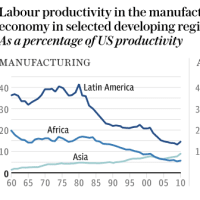IMF tells regulators to brace for global 'liquidity shock'
(IMF:規制当局よ、世界的な「流動性ショック」に備えるがよい)
By Ambrose Evans-Pritchard, in Washington
Telegraph: 2:28PM BST 15 Apr 2015


(IMF:規制当局よ、世界的な「流動性ショック」に備えるがよい)
By Ambrose Evans-Pritchard, in Washington
Telegraph: 2:28PM BST 15 Apr 2015
Financial engineering that preceded the last two financial crises is back, International Monetary Fund warns
過去2度の金融危機を招いた金融エンジニアリングが復活じゃ、とIMFがワーニング。
An illusion of liquidity has beguiled financial markets across the world and spawned some of the worst excesses seen on Wall Street in modern times, the International Monetary Fund has warned.
流動性のイリュージョンは世界中の金融市場をたぶらかした上に、ウォール街では現代史上最凶のやり過ぎも引き起こした、とIMFがワーニングしました。
Investors are borrowing money to buy shares on the US stockmarket at a torrid pace and are resorting to the same sorts of financial engineering that preceded the last two financial crises.
投資家は米市場で株を買うために猛烈なペースで借金をしまくって、前回2度の金融危機を招いたような類の金融エンジニアリングをやらかしています。
"Margin debt as a percentage of market capitalisation remains higher than it was during the late-1990s stock market bubble. The increasing use of margin debt is occurring in an environment of declining liquidity," said the IMF in its Global Financial Stability Report.
IMFは国産金融安定性報告書の中でこう言っています。
「時価総額に占める証拠金負債の割合は1990年終盤のバブルの時よりも高止まりしたまんま。流動性が減ってる時に増えてるんだから」
"Lower market liquidity and higher market leverage in the US system increase the risk of minor shocks being propagated and amplified into sharp price corrections," it said.
「米国システムでマーケットの流動性が減ってマーケットのレバレッジが増えるってことは、ちょっとしたショックがだーっと広がって株価の調整を引き起こす危険性を増やしてるってことだから」
The report said there are clear signs that underwriting standards are deteriorating in a pervasive search for yield. So-called "covenant-light loans" with poor protection for creditors now make up two-thirds of all new leveraged loans in the US.
同報告書曰く、金利を求めて引き受け基準がユルユルになっている、というはっきりしたサインが出ているそうで。
債権者が余り守られないいわゆる「カバナント・ライト・ローン」なんて、今や米国で新しく貸し出されたローンの3分の2を占めてます。
The ratio of non-financial corporate debt to underlying assets has reached 27pc, even higher than it was just before the Lehman crash in 2008. Issuance of "second lien" loans that face a likely wipe-out in cases of default are running near record levels once again.
非金融企業の負債・資産比率は27%に達しました。
2008年のリーマン・ショック直前よりも未だ高い。
デフォったら全滅の可能性が高い「第2順位」ローンもまたまた史上最高レベルに迫っています。
This is becoming hazardous as the US Federal Reserve prepares to raise rates, a move that risks a spike in global borrowing costs and may cause liquidity to dry up almost overnight. "A sudden shift in market views that unwinds compressed premiums and sends yields higher could trigger a market liquidity shock," said the report.
FRBが利上げのアップを進めているので、これが益々ヤバくなりつつあります。
世界的に借入金利を急上昇しかねない上に、殆ど一夜にして流動性をからっからに枯渇させる可能性のある動きですから。
「金利を圧迫するのを止めて上昇させるような市場の見解の突発的なシフトがあれば、流動性ショックを引き起こすかも」とのこと。
The so-called 'flash crash' on US bond markets last October and the collapse of the Swiss currency floor in January showed how quickly liquidity can vanish, acting as "a powerful amplifier of financial stability risks."
去年10月に米債券市場で起こったいわゆる「フラッシュ・クラッシュ」と1月のスイス・フランの底抜けは、流動性が猛スピードでなくなって「金融安定性リスクを思いっ切り増幅」させる様子を見せつけました。
The risk of seizure has been made worse by new regulations that effectively force market makers and dealers to hold much lower inventories, or to drop out of the business altogether. The IMF said that large inflows of money into mutual funds have "provided an illusion of liquidity in credit markets" but this will be no protection in a major shock.
事実上マーケットやディーラーに在庫削減や強制退場を強制する新しい規制のおかげで、急停止リスクは悪化しています。
IMF曰く、投資信託に巨額の資金が雪崩れ込んでいることで「信用市場に流動性のイリュージョンを生み出している」けど、これは大きなショックになったら何の防御にもならないとか。
The report warned that distress in the global oil industry could be the trigger for the next storm. Lending to the oil and gas industry reached $450bn last year, double the pre-Lehman peak. New bond issuance graded at 'junk' level have almost tripled to 45pc. The total debt outstanding is now $3 trillion.
世界の石油業界の落ち込みが次の嵐のきっかけになるかも、と本報告書はワーニングしています。
石油ガス業界への融資額は昨年、4,500億ドルに達しましたが、これってリーマン・ショック前のピークの倍です。
「ジャンク債」の新規発行額なんて3倍近い45%になってますし。
債務残高、合計したら3兆ドル。
Defaults in the energy sector tend to lag oil price crashes by around twelve months since drillers typically hedge their output on the futures markets for a while. "Aftershocks for the corporate sector may not yet have fully filtered through," said the IMF.
エネルギー業界での石油価格暴落からデフォルトまでのタイム・ラグは大体12か月くらい。
というのも、採掘業者は大体しばらく先物市場でアウトプットをヘッジしてるから。
「余震はまだ企業部門全体には行き渡ってないのかも」とIMF。
The slump in oil prices is a powerful shot in the arm for world economy. It rotates vast sums of surplus capital from the oil-states into consumption, countering the chronic lack of demand that has held back global growth since 2008.
石油価格の低迷は、世界経済にとっちゃ強力なカンフル剤ですけどね。
物凄い額の余剰資本を産油国から消費に回して、2008年からずっと世界経済の成長の足を引っ張ってきた慢性的な需要不足の対策になりますから。
Yet there is a dark side for investors. The IMF said the oil states have accumulated $1.1 trillion over the last five years in foreign reserves alone, "an important source of funding for the global banking sector and capital markets."
でも投資家にとってはダークサイドがあるわけで。
IMFは、産油国はこの5年間に外貨準備だけでも1.1兆ドルを積み上げた、「世界の銀行セクターと資本市場にとって大事な資金源」と言ってます。
These states hold $2 trillion in US assets, with $1.3 trillion concentrated in equities and $580bn in US Treasuries, and $230bn in credit. They are already having to draw down on this wealth to plug holes in their budgets at home, extracting a net $88bn last year. This could have "market repercussions" if it accelerates, said the report.
これらの国は2兆ドルを米国資本で、1.3兆ドルを株式、5,800億ドルを米国債、2,300億ドルを信用にしてます。
もう財政の穴埋めに手を付けなくちゃいけなくなってますけど…去年の引き出し額は880億ドル。
加速しちゃったらこれは「市場に影響」するかも、とIMFの報告書。
The IMF itself is in a delicate position. It is has been a cheer-leader for ultra-loose monetary policy to stave off global deflation and prevent debt-dynamics spinning out of control in Europe, Japan, and the US. Yet many of the risks now emerging are a direct result of quantitative easing and zero-rates.
IMFだってビミョーな立場ですから。
世界的なデフレを阻止してヨーロッパ、日本、米国で債務ダイナミクスが制御不能にならないように、と超ゆるゆる金融政策のリアリーダーをしてきたんですから。
でも今出て来てるリスクの多くは量的緩和とゼロ金利の直接的な結果ですよ。
A third of all sovereign bonds in the eurozone now carry negative yields. This is causing havoc for money markets and for the life insurance industry, which has locked into commitments stretching out for thirty years that are becoming untenable.
ユーロ圏のソブリン債の3分の1が今じゃマイナス金利だし。
これでマネーマーケットと維持が難しくなってきてる30年なんて長期契約に縛られてる生保業界は大損害ですよ。
"A prolonged low interest rate environment will pose severe challenges for a number of financial institutions. Weak European midsized life insurers face a high and rising risk of distress. The failure of one or more midsize insurers could trigger an industry-wide loss of confidence," it said.
「低金利が長期化した環境は多くの金融機関に強烈な試練を与えるであろう。弱小ヨーロッパ中小規模生保は、財務危機リスクが高い上に益々高くなるであろう。中型生保が1つかそこら潰れただけで業界全体の信頼喪失につながるかもしれぬ」とか。
"The industry has a portfolio of €4.4 trillion in assets in the EU, with high and rising interconnectedness with the wider financial system. A large mark-to-market shock could force life insurers into asset reallocations and sales that could engulf the financial system," it said.
「生保がEUに抱えるポートフォリオの規模は4.4兆ユーロ。もっと広い金融システムとの繋がりは密接な上に、益々密接になっている。大規模なマーケット・トゥ・マーケット・ショックが起これば、生保は資産の再配分やら売却やらを迫られ、これは金融システムを呑み込むかもしれぬ」とか。
The IMF does love to keep us awake at night.
IMFってドS。















